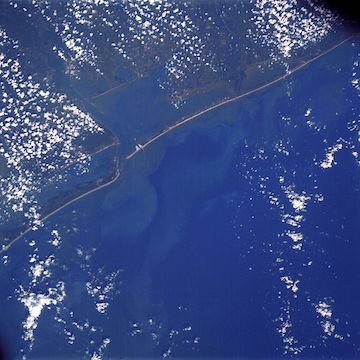441117-restored reef.jpg

The Nature Conservancy has restored a portion of Half Moon Reef in Matagorda Bay, off the coast of Texas. Credit: NASA
If you build it, they will come. That’s been the case with an oyster reef along the Texas coast. The once-thriving reef had died out, but a recent restoration project brought it back to life. And lots of oysters and other marine creatures are now calling it home.
Half Moon Reef is in Matagorda Bay, about halfway between Galveston and Corpus Christi. In the early 1900s, it covered hundreds of acres. As the 20th century progressed, though, the reef was decimated by dredging, oyster harvesting, and changes in the water flow into the bay. Very little of the original reef was left.
But a restoration project has brought about 50 acres of it back to life. The project was led by the Nature Conservancy, and included federal, state, and local agencies, as well as private foundations.
Workers laid 32 rows of concrete and limestone on the shallow bay floor. Each row is about 650 feet long, and includes a variety of sizes and shapes to attract different kinds of organisms. By May of 2016, oysters had covered about 70 percent of the surface of the new reef. Other fish and shellfish showed big increases, too.
The restored reef has had economic benefits as well. A study of anglers in the region found that the reef has created a dozen new jobs, and is directly adding about $690,000 a year to the Texas economy.
The project is serving as the template for the restoration of two more reefs in Texas, plus another one in Florida -- providing habitat for oysters and many other creatures on the Gulf coast.
This episode of Science and the SeaTM was made possible by Chuck Nash Auto Group of San Marcos, Texas.

